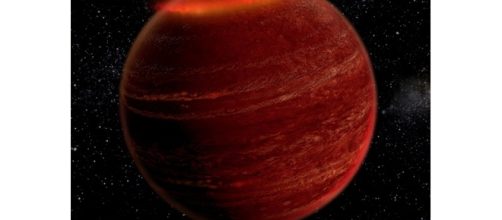An international team of astronomers has identified a brown dwarf with the highest mass. The object is named as SDSS J0104+1535. Scientists say the star is too small for nuclear fusion. It is made of solid metals and hot gasses. Scientists report the discovery today in “Monthly Notices of the Royal Astronomical Society.” Professor ZengHua Zhang at the Institute of Astrophysics leads the research team. He says,"We did not expect to see such a wonderful Brown Dwarf. There are many similar objects out there waiting to be found.”
The mass of this star
The mass of this newly discovered dwarf is unknown.
ZengHua says it is too small for nuclear fusion. The red-colored star is more massive than our Earth. An observation by ESO's Very Large Telescope (VLT) suggests that the star is made of gasses that are 200 times purer than the Sun. It consists of more than 98% hydrogen and helium. It is located 750 light-years away in the constellation of Pisces. Brown dwarfs are known to be as heavy as the lightest stars. Astronomers believe that its age is 10 billion years. It is the most massive brown dwarf found to date.
How to spot a brown star?
Previously, it was considered that hydrogen and helium only exist on red-colored stars, but the discovery points a large population of red and brown stars that have the two gasses.
ZengHua Zhang classifies SDSS J0104+1535 into an L-type and a U-type. He uses the European Southern Observatory's Very Large Telescope (VLT) in his research. Back in 2012, astronomers spotted a similar object in the Milky Way. They say our planetary system has various rogue planets. The only problem is that no brown or red dwarf orbits the Sun, so their chances to quickly vanish are high. This star is relatively close to our Earth, so scientists can continue to observe it for a few weeks to gain a better understanding of the nature of rogue stars and planets. If such dwarfs exist in a large number, then the Visible and Infrared Survey Telescope for Astronomy (VISTA) and ESA’s Euclid mission will hopefully find them in the near future.

